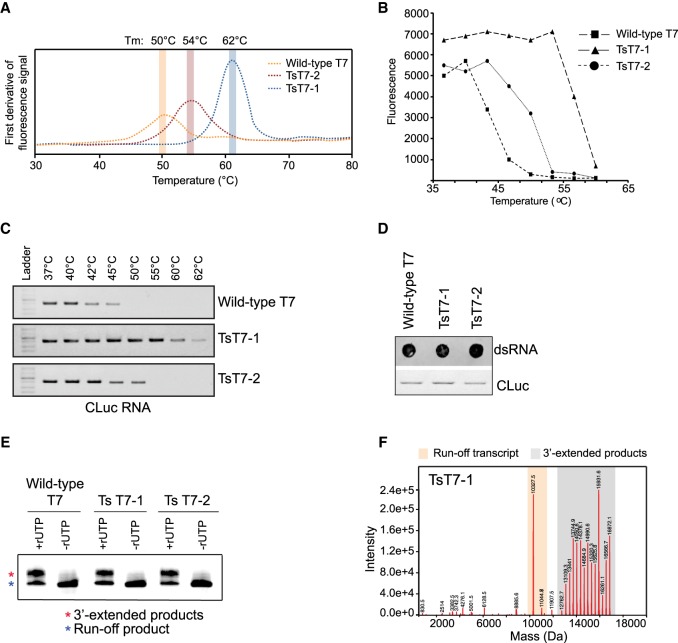FIGURE 2.
Thermostable (Ts) RNAPs are active at high temperatures and do not affect 3′-extended RNA by-product formation. (A) Melting temperatures of wild-type T7 RNAP (orange), TsT7-1 (blue), and TsT7-2 (red) determined by nano-differential scanning fluorimetry. (B) Molecular beacon assay for the efficiency of IVT with TsT7-1 or TsT7-2 compared to wild-type RNAP at temperatures ranging from 37°C to 62°C. (C) Gel electrophoreses analyses of CLuc RNA synthesized with either wild-type RNAP, TsT7-1, or TsT7-2 RNAPs at temperatures ranging from 37°C to 62°C. Equal volume of IVT reactions were loaded in each well to reflect the differences in RNA yield at each temperature. (D) dsRNA immunoblot using J2 antibody and gel electrophoresis analysis of CLuc RNA synthesized from IVT reactions performed at 37°C using wild-type T7, TsT7-1, and TsT7-2 RNAPs. For the immunoblots, 1.0 µg of RNA was loaded for each mRNA. For the gel electrophoresis analyses, 0.05 µg of RNA was loaded in each well. (E) Denaturing gel analysis of IVT reactions using Template IVT short-1 with Ts RNAPs compared to wild-type RNAP. Reactions were performed with either four NTPs (+rUTP) or with three NTPs (−rUTP). (F) Intact mass spectrometry of short IVT products from TsT7-1 under standard conditions (37°C) with products longer than the run-off transcript highlighted in gray and the expected run-off transcripts in orange (including n + 1, n + 2 products from nontemplated additions).

